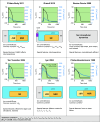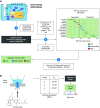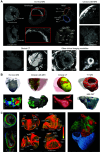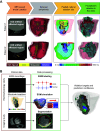Computational modeling of cardiac electrophysiology and arrhythmogenesis: toward clinical translation
- PMID: 38153307
- PMCID: PMC11381036
- DOI: 10.1152/physrev.00017.2023
Computational modeling of cardiac electrophysiology and arrhythmogenesis: toward clinical translation
Abstract
The complexity of cardiac electrophysiology, involving dynamic changes in numerous components across multiple spatial (from ion channel to organ) and temporal (from milliseconds to days) scales, makes an intuitive or empirical analysis of cardiac arrhythmogenesis challenging. Multiscale mechanistic computational models of cardiac electrophysiology provide precise control over individual parameters, and their reproducibility enables a thorough assessment of arrhythmia mechanisms. This review provides a comprehensive analysis of models of cardiac electrophysiology and arrhythmias, from the single cell to the organ level, and how they can be leveraged to better understand rhythm disorders in cardiac disease and to improve heart patient care. Key issues related to model development based on experimental data are discussed, and major families of human cardiomyocyte models and their applications are highlighted. An overview of organ-level computational modeling of cardiac electrophysiology and its clinical applications in personalized arrhythmia risk assessment and patient-specific therapy of atrial and ventricular arrhythmias is provided. The advancements presented here highlight how patient-specific computational models of the heart reconstructed from patient data have achieved success in predicting risk of sudden cardiac death and guiding optimal treatments of heart rhythm disorders. Finally, an outlook toward potential future advances, including the combination of mechanistic modeling and machine learning/artificial intelligence, is provided. As the field of cardiology is embarking on a journey toward precision medicine, personalized modeling of the heart is expected to become a key technology to guide pharmaceutical therapy, deployment of devices, and surgical interventions.
Keywords: arrhythmias; atrial fibrillation; cardiac electrophysiology; computational modeling; sudden cardiac death.
Conflict of interest statement
No conflicts of interest, financial or otherwise, are declared by the authors.
Figures
















References
Publication types
MeSH terms
LinkOut - more resources
Full Text Sources
Medical
Research Materials

